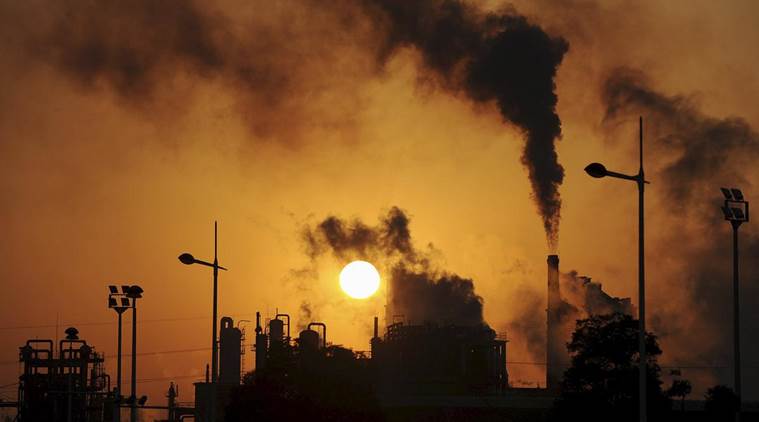Not a single Indian city among 168 monitored, meet with the World Health Organisation (WHO) standards, said Greenpeace on Wednesday in a study called Airpocalypse. The study is based on the data sought through diverse sources and the Right to Information (RTI) Act for 24 states and union territories.
“The major reason of unbreathable air is fossil fuel,” adds the study.
While no cities comply with WHO standards, a few cites in southern India, such as Warangal in Telangana, meet the National Ambient Air Quality (NAAQ) standards, says the Greenpeace.
“We have been talking only about Delhi being polluted. But what about other cities which are equally polluted,” asked Sunil Dahiya from Greenpeace.
As per the study, Delhi tops the list of 20 highly polluted cities, with PM10 (particulate matter less than 10 mm in the air) levels between 168 and 268 units, for the year 2015. Notably, this was 4.5 times of the NAAQ standards and 13 times the WHO standards.
As stated by Greenpeace, air pollution leads to loss of 3% of country’s GDP apart from triggering 1.2 million deaths annually. “There was lot of ambiguity in the data of different agencies and it was not shared with the researchers. We had to obtain data for 48 cities through RTI,” Dahiya said.
Apart from Delhi, Ghaziabad, Allahabad and Bareily (Uttar Pradesh), Faridabad (Haryana), Jharia (Jharkhand), Alwar (Rajasthan), Ranchi, Kusunda and Bastacola (Jharkhand), Kanpur (Uttar Pradesh) and Patna (Bihar) are among the most polluted cities with PM10 levels ranging from 258 to 200 units.
According to WHO’s approved standards, PM10 and PM2.5 (particles with diameter less than 2.5 mm) should be 50 and 25 units yearly while as per NAAQ, it should be 60 and 40 units respectively. “In 2016, severe air pollution disrupted everyday life, especially during the winter. In 2015 air pollution (PM2.5) levels of India overtook even China,” says study.
The study adds that although pollution levels are growing across the nation, the stress to this point has been on Delhi only. Significantly, pollution levels in other states such as Karnataka, Tamil Nadu and Maharashtra are also increasing.
The study called for a far-reaching policy to deal with pollution by shifting to clean technologies at a war-footing level. The country is yet to recognize that air pollution is a national problem, says the study.
















